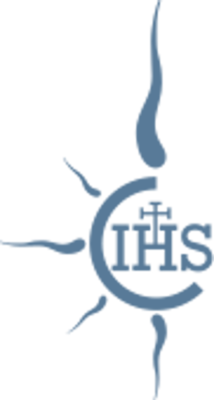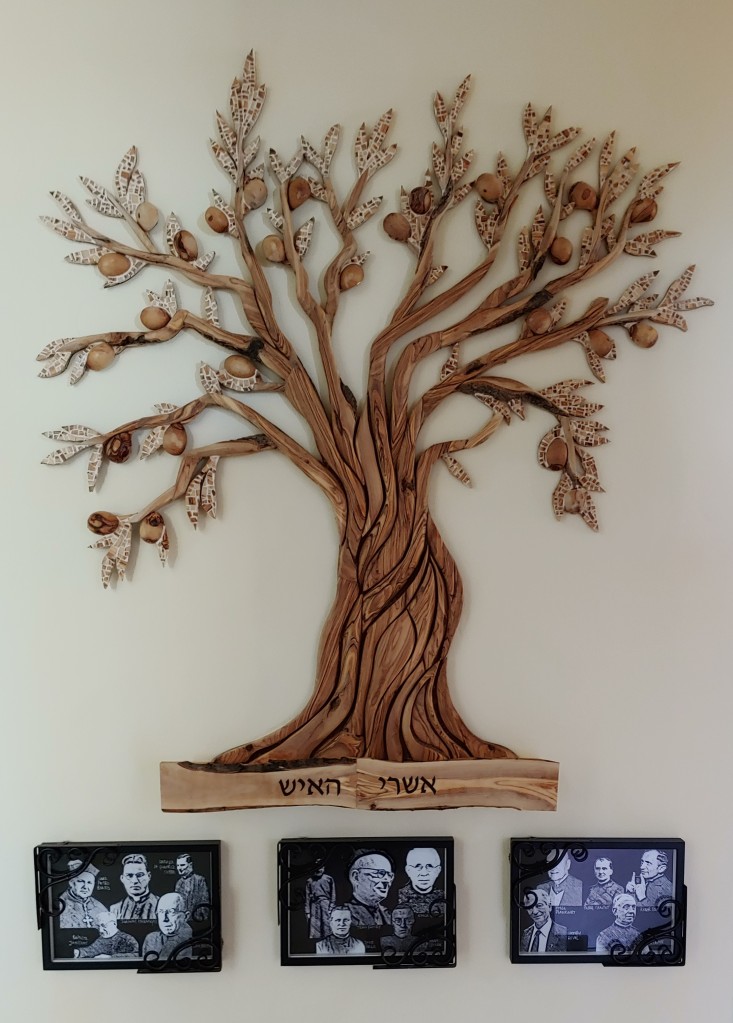
Through the national memorial for the victims of the Shoah, Yad VaShem, the State of Israel recognizes those courageous non-Jewish men and women, who, risking their lives, saved Jews during the Shoah. Around twenty-five thousand such people have been recognized and among them are fifteen Jesuits.
In his book, Jesuit Kaddish: Jesuits, Jews and Holocaust Memorial (University of Notre Dame Press, 2020), Boston College professor of philosophy and Jewish studies, James Bernauer, traces the attitudes of Jesuits to Jews and Judaism through the ages. From the founder, Saint Ignatius’s philo-Semitism not ignoring the centuries of a teaching of contempt and an often-implacable attitude of hostility. At the end of the book, Bernauer pays tribute to the Jesuits who have been recognized as Righteous among the Nations.
Five are Belgians:
- Jean-Baptiste De Coster (1896–1968), a Belgian Jesuit, headed the College of Saint Jean Berchmans in Brussels. He agreed to shelter large groups of Jews in his college, helped forge baptism certificates and other false papers, thereby safeguarding many Jews from deportation. [see Yad Vashem site, here]
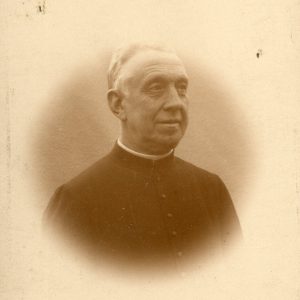
Fr Jean-Baptiste De Coster
- Emile Gessler (1891–1958), a Belgian Jesuit, who was active in rescuing Jewish children. Father Gessler and his companions forged baptism papers as part of their assistance to Jews to avoid their deportation to the camps. [see Yad Vashem site, here]
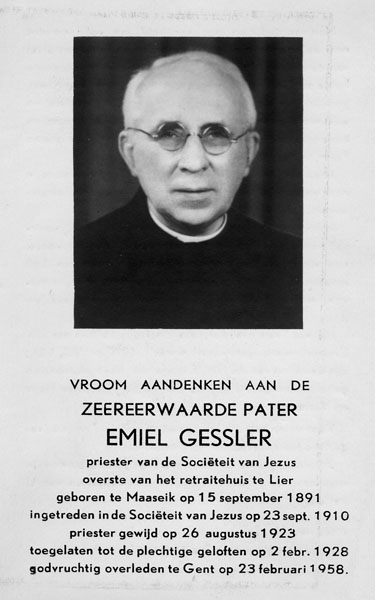
- Jean-Baptiste Janssens (1889–1964), a Belgian Jesuit, who later served as the General of the Jesuits in Rome, assisted the network working to save Jews, helping to issue forged baptism certificates for many Jewish children. [see Yad Vashem site, here]
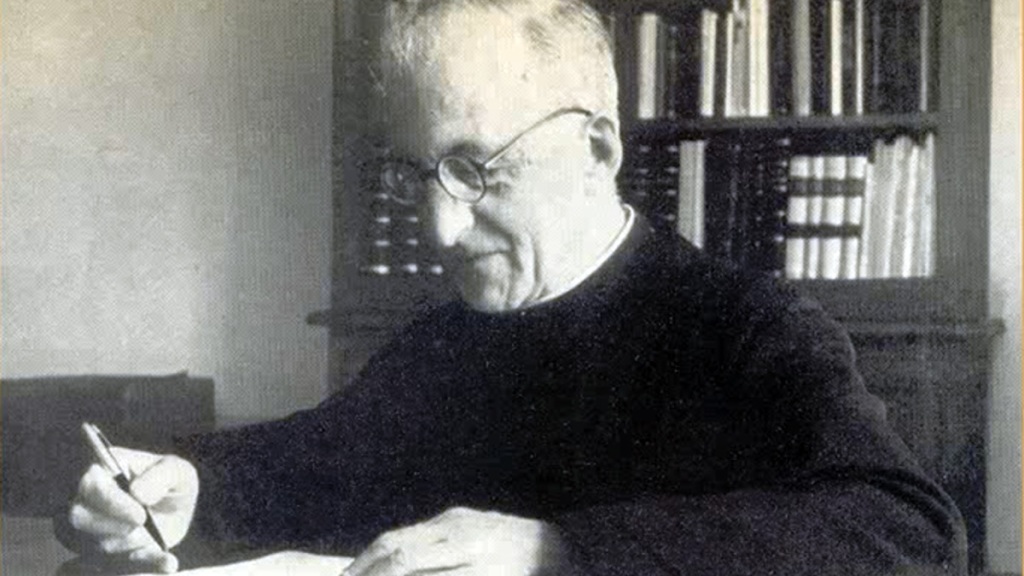
Fr Jean-Baptiste Janssens (1889-1964)
- Alphonse Lambrette (1884–1970), a Belgian Jesuit, active in the rescue network in Brussels, where he helped by forging baptism papers for Jewish children, which safeguarded them from deportation. [see Yad Vashem site, here]
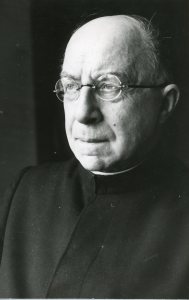
Fr Alphonse Lambrette (1884–1970)
- Henri Van Oostayen (1906–1945), a Belgian Jesuit, was part of the rescue network and helped conceal Jewish boys in St. John Berchmans College in Brussels. He was eventually arrested by the Germans, and died in the Bergen-Belsen camp in April 1945. [see Yad Vashem site, here]

Five are French:
- Roger Braun (1910–1981), a French Jesuit who worked tirelessly in southern France in solidarity with other Christians in order to save Jews and is credited with smuggling a group of Jewish children to safety. [see Yad Vashem site, here]
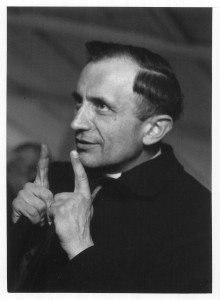
Fr Roger Braun (1910–1981)
- Pierre Chaillet (1900–1972), a French Jesuit priest in Lyons, who mobilized Catholics during the Nazi occupation to help camp inmates in southern France. In 1941, Chaillet inaugurated an underground journal called Les Cahiers du témoignage chrétien, which encouraged resistance to Nazi rule. He also provided Jewish refugees with forged papers, helped smuggle Jews into Switzerland, and took part in the rescue of 108 Jewish children from the Venissieux transit camp near Lyons. [see Yad Vashem site, here]
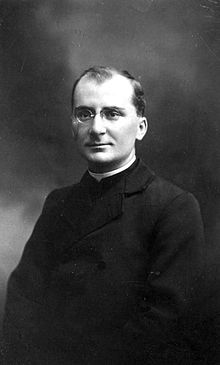
Fr Pierre Chaillet (1900-1972)
- Jean Fleury (1905–1982), a French Jesuit, active in rescuing persecuted Jews. Father Fleury used his close relations with the French underground and its extensive network to move the children to the south of France. He provided forged papers and travel passes and, more than once, money and food. [see Yad Vashem site, here]

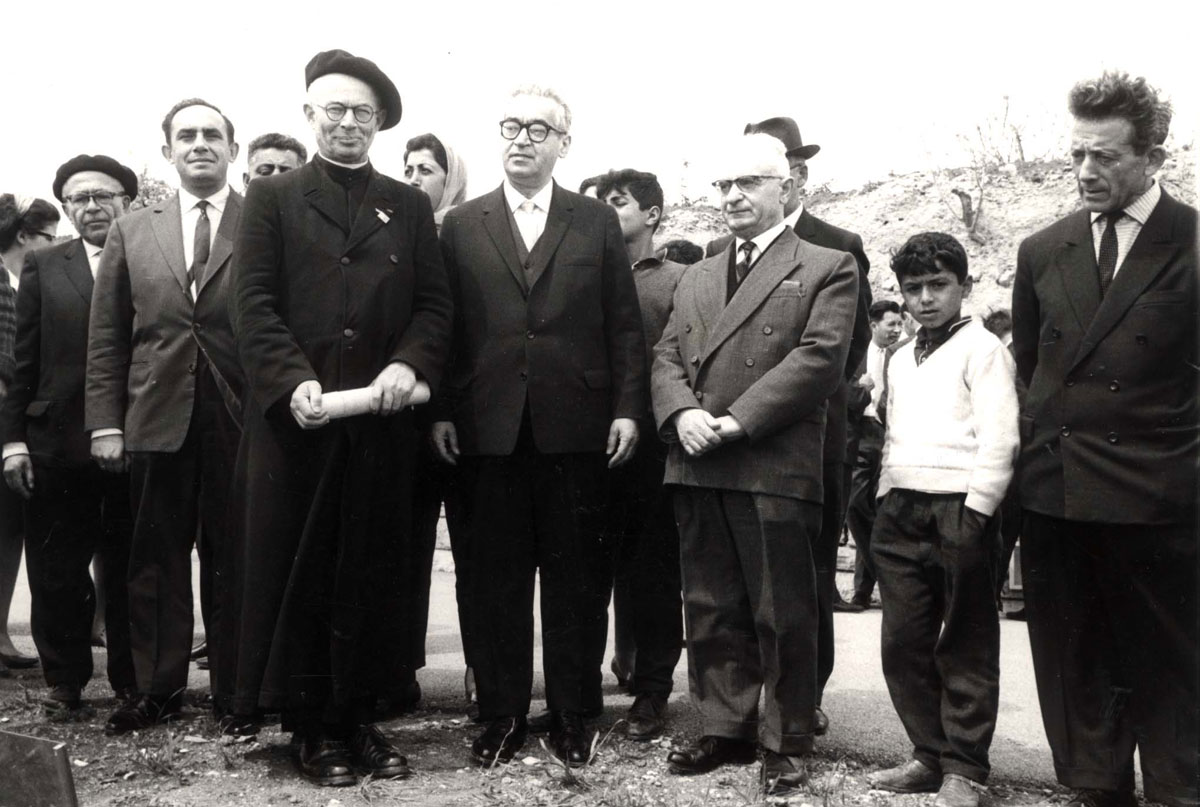
Fr Jean Fleury (1905–1982),
- Emile Planckaert (1906–2006), a French Jesuit, an outspoken critic of the Nazi authorities, he helped to hide Jews and provide fake documentation to save Jewish lives. [See Yad Vashem site, here]
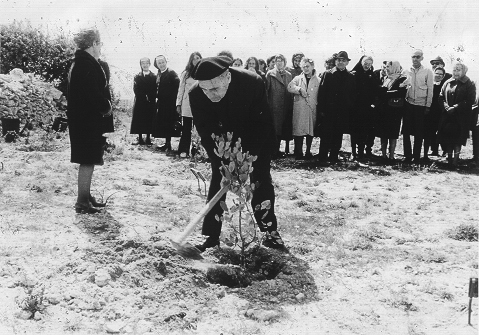

Fr Emile Planckaert (1906-2006)
- Henri Revol (1904– 1992), a French Jesuit, who risked his life leading Jews across the French border with Switzerland to safety. [see Yad Vashem site, here]
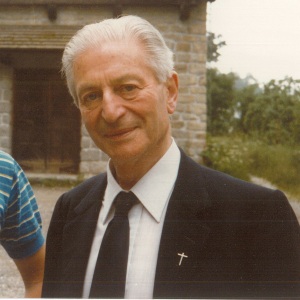
Fr Henri Revol (1904-1992)
One is Polish:
- Adam Sztark (1907–1942), a Polish Jesuit, courageously condemned the persecution of Jews and encouraged Polish Catholics to help them. He provided “Aryan” papers to Jews in hiding and sent Jewish children to hide with Christian families in the orphanage. He was murdered by the Nazis in December 1942. [see Yad Vashem site, here]
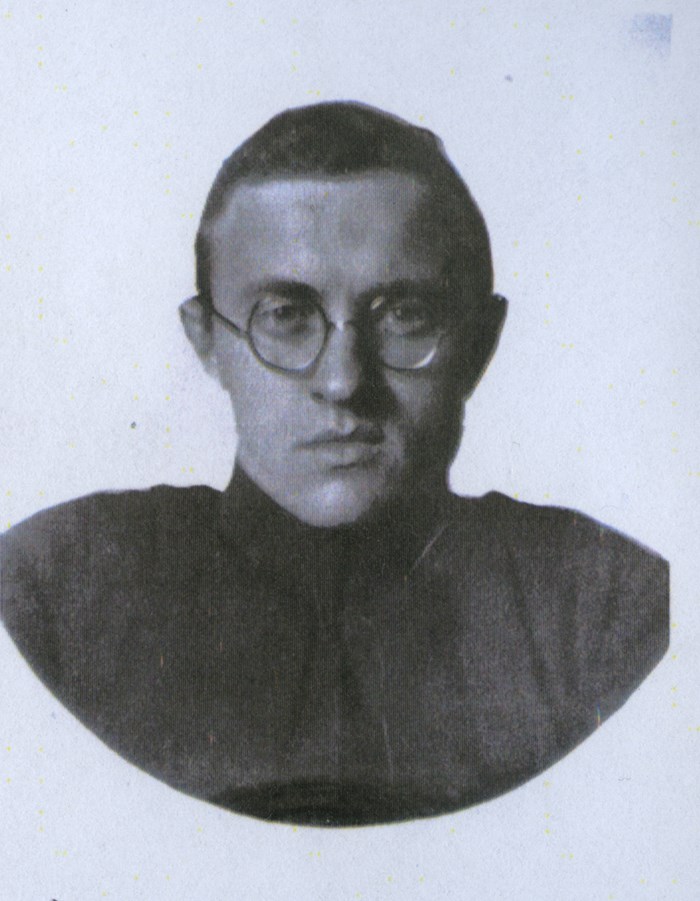
Fr Adam Sztark (1907-1942)
One is Hungarian:
- Jacob Raile (1894–1949), a Hungarian Jesuit, hid tens of Jews in the Jesuit house in Budapest, providing for their needs and making sure they were not discovered. [see Yad Vashem site, here]

Fr Jacob Raile (1894-1949)
One is Greek:
- Ioannis Marangos (1900–1989), a Greek Jesuit priest, agreed to hide an eleven-year-old Jewish boy in his monastery. He promised to return the child to his parents after the war. [see Yad Vashem site, here]
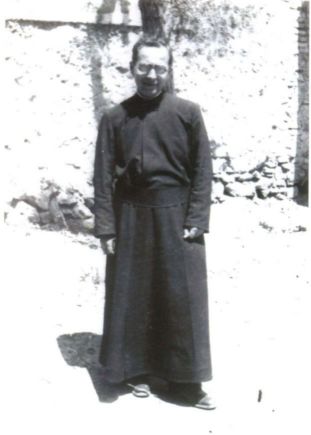
Fr Ioannis Marangos (1900-1989)
Two are Italian:
- Pietro Boetto (1871–1946), an Italian Jesuit who was archbishop of Genoa in Italy and created a cardinal by Pope Pius XI. He assisted a Jewish rescue network, saving many Jewish lives. [see Yad Vashem site, here]

Cardinal Pietro Boetto (1871-1946)
- Raffaele de Ghantuz Cubbe (1904–1983), an Italian Jesuit was rector of the Nobile Collegio Mondragone School in Frascati, near Rome. He accepted three Jewish children as students in the school. [see Yad Vashem site, here]
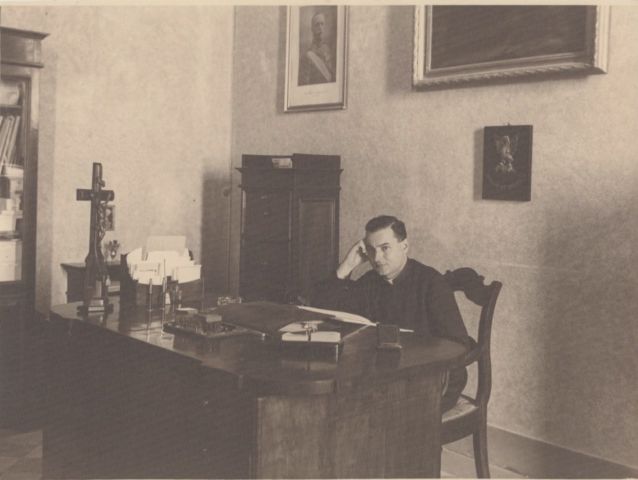
Fr Raffaele de Ghantuz Cubbe (1904-1983)
